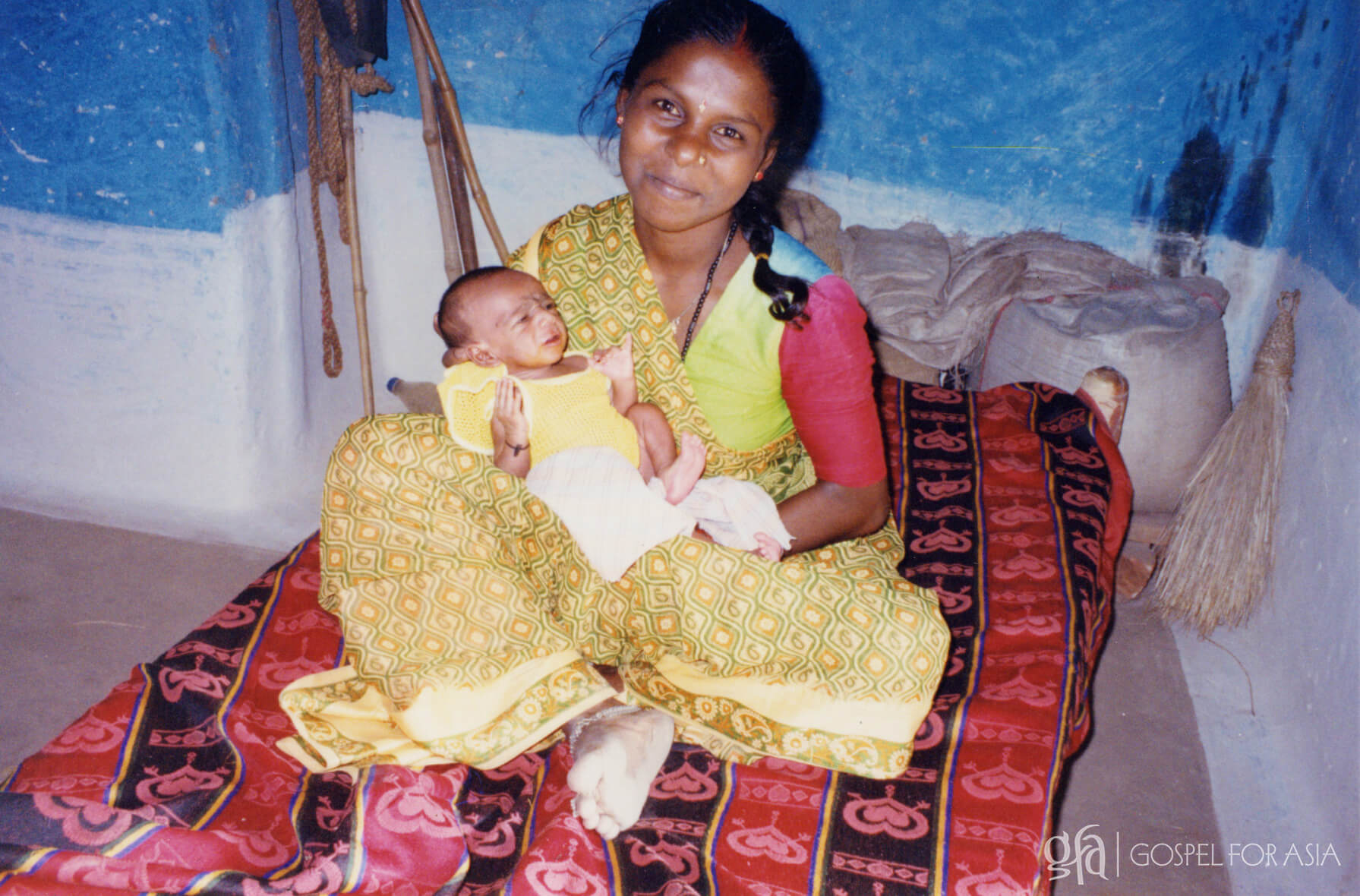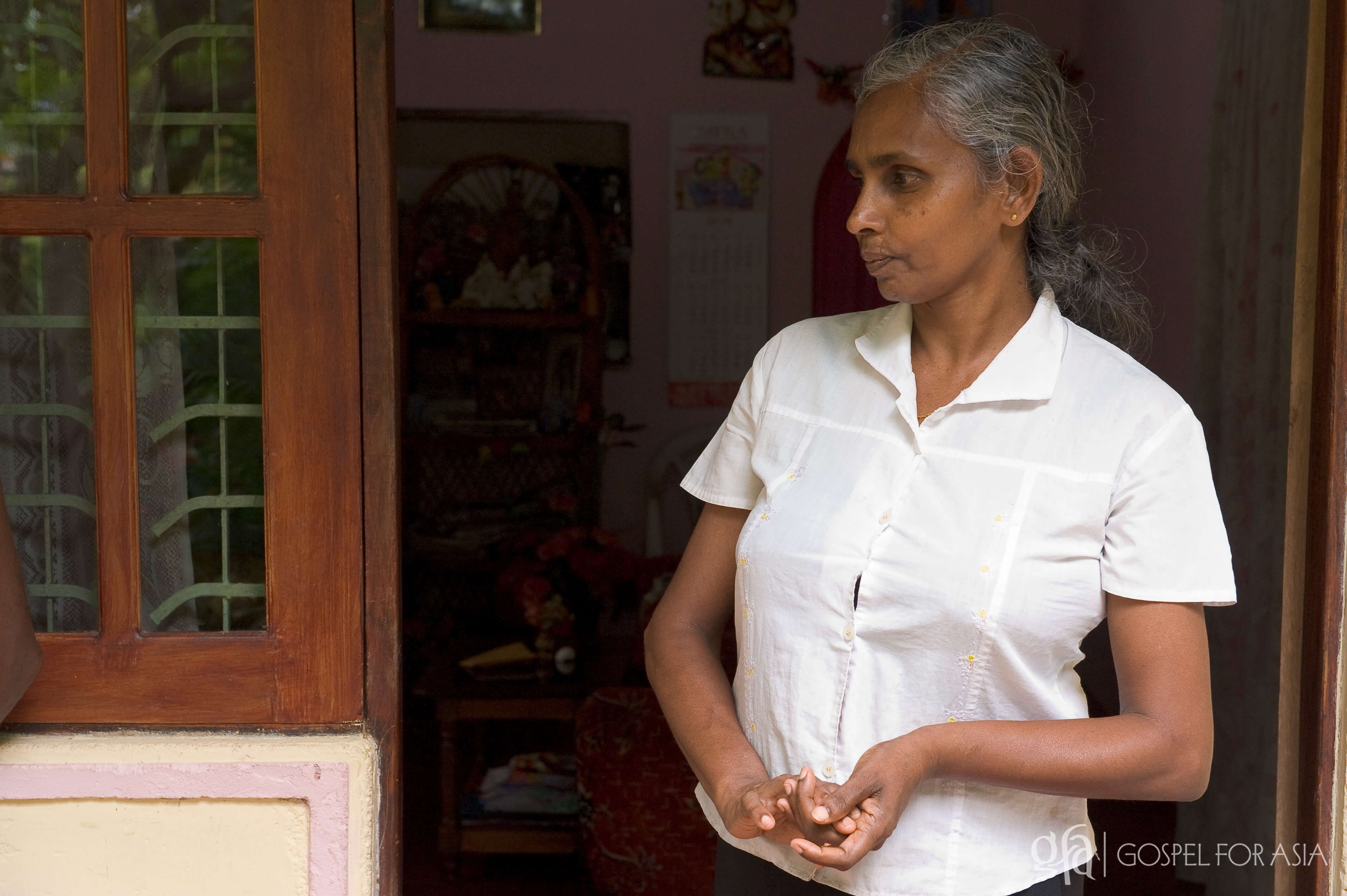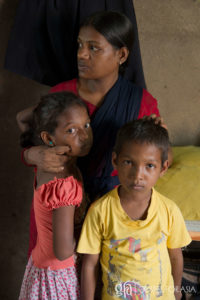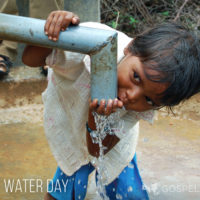
Wills Point, Texas – GFA (Gospel for Asia) – Discussing the Missing Women Quandary on Mother’s Day by Karen Mains
I have decided that Mother’s Day has the potential to make as many women unhappy as it does to make them feel loved and revered.
This realization hit me early in my marriage when I was a young mom with four wonderful, but often neglectful, kids.
“The kids haven’t done anything for Mother’s Day!” I would complain to my husband. “You have to coach them,” I would explain.
This was invariably answered by the proverbial husbandly defense, “But you’re not my mother!”
I have decided that Mother’s Day has the potential to make as many women unhappy as it does to make them feel loved and revered.
David never really made the connection to the fact that his offspring recognized him on Father’s Day because I reminded them that Dad’s Day was on the calendar. (This in spite of the fact that David Mains is not my father.)
Due to this yearly in-house male resistance, I finally figured to myself, Why am I making myself unhappy over this highly over-commercialized day anyway? (The National Retail Federation’s spending survey for Mother’s Day indicated that some $23.6 billion dollars was spent in 2017 on United States’ moms.) Ahah! I thought to myself. Plan a day for yourself. Do something you want to do. Spend a few hours enjoying some activity that brings solace and delight to your own soul. This year, for instance, I’m giving myself the gift of signing up at the local community college for two courses in Advanced Gelli Printmaking: Digital Photo Transfers and Homemade Texture Rolls. Decades ago, I decided that I had the power to design my own Mother’s Day trajectory and avoid any of the blues that can bite moms due to offspring neglect.
“Don’t spend any money on me,” I’ve instructed my adult children. A phone call or a card will be enough. Between nine grandchildren and four adult children (and their various spouses), our cumulative offsprings’ Mother’s Day batting average is about 50 percent. Not bad. I am slightly smug that the Mains clan is not contributing to the national GDP due to the over-hyped, over-sentimentalized advertising campaigns of the greeting card industry, restaurateurs, and local florists; at least, they’re not contributing to it on my behalf.
There are also deeper considerations that I’ve learned through the years regarding responses to Mother’s Day. While designing a healing liturgy with a team of women who had all experienced childbirth losses, I became aware that Mother’s Day was for many a painful event.
“I don’t go to church on that Sunday,” several explained.
It just hurts to recognize other mothers when you have suffered childbirth losses or when you have not been able to have children or when you have never married. It’s not that you’re not happy for all the friends who are being honored. It’s just that the wounds from past pains are still real but often unrecognized by others or just not understood. On every Mother’s Day since creating the gentle healing liturgy, I always hear my friends’ voices, “It’s just too painful.”
Recently, I’ve had some other radical thoughts about Mother’s Day and how it might be used to make a difference for other mothers in the world and in a way that wouldn’t evoke pain for those who suffer silently. Partly, this is because I‘ve been writing about and consequently researching the dilemma of women worldwide. Partly, this is because I served for eight years on the board of directors for a faith-based international health organization that had developed a remarkable training program to train women to train women. Partly, this is because, for much of my life, I worked in women’s ministries and consequently, co-wrote a book titled Child Sexual Abuse: A Hope for Healing.
To begin thinking about my idea for a radical approach to Mother’s Day, let’s begin with what is called the “Missing Women Quandary.“

According to demographers, there are some 100 million women missing in the world. This phenomenon was first noted by the Nobel Prize-winning economist Amartya Sen in an essay he published in 1990 in The New York Review of Books. Through the following decade he continued to expand his exploration and discoveries that were published in many subsequent academic works. The present estimates of between 90 to 101 million “missing women” and the various causes for the phenomenon has been studied, debated and analyzed by demographers and social scientists in the years since Sen’s original announcement, but most agree now to the reality that millions of women worldwide are missing.
This number is determined by what is called the sex ratio—a means of measuring the amount of males born in a society against the amount of women. Generally, the ratio between male and female births is slightly biased toward the masculine sex. Due to some kind of equilibrium matrix, nature allows for, on average, some 105 male births for every 100 female births.
These numbers tell us, quietly, a terrible story of inequality and neglect leading to the excess mortality of women.
Demographers propose that this is because men are at a higher risk of dying for a variety of causes—violence, accidents, injuries, war casualties—and in time, the sex ratio of a given population for any particular age set begins to equalize. However today, when what should be a normal equalized sex ratio is measured in many current populations, particularly in developing countries in Asia, as well as in the Middle East and in parts of Africa, results show a divergence from the norm. The current sex-ratio measured against what should be the normal sex-ratio in China, for instance, reveals not a ratio that is beginning to become even between the sexes but an expanding ratio of men to women of 1.06 (l.06 men per 1 woman), which is far higher than in most countries. Researcher Amartya Sen concludes, “These numbers tell us, quietly, a terrible story of inequality and neglect leading to the excess mortality of women.”
There is now a general consensus as to the reasons why sex ratios are teetering on a wild imbalance in various countries of the world: sex-selective abortions, female infanticide, inadequate health care and nutrition for female offspring, lack of pregnancy and childbirth education, and the now-booming sex-slave trade industry.
Nicholas Kristoff and his wife, Sheryl WuDunn, report, “In other words, far more women and girls are shipped into brothels each year in the early twenty-first century than African slaves were shipped into slave plantations each year in the eighteenth or nineteenth centuries.”
This horrendous reality is verified by the Foreign Affairs journal, and the above husband-and-wife writing team estimate that some 3 million women and girls (very few boys) worldwide are entrapped in the sex slave trade.
Far more women and girls are shipped into brothels each year in the early twenty-first century than African slaves were shipped into slave plantations each year in the eighteenth or nineteenth centuries.

The issue of malnourishment also takes a generational toll. When children are malnourished, and historically girls are malnourished, they give birth to underweight babies, whose bodies are then more susceptible to disease. Malnourished girls become malnourished women, prone to childbirth losses—miscarriages, stillbirths, infant deaths—and multiple pregnancy complications resulting in mortality. In India, for instance, demographers find that by and large, the main cause for female deaths is cardiovascular disease, diseases of the heart and blood vessels that can lead to heart attacks or strokes. Medical researchers have discovered a close relationship between low birth weight and eventual cardiovascular diseases at a later age.
Maternal mortality refers to the amount of women who die in childbirth. Some 99 percent of women in the world who die giving birth are from poor countries. This is determined by another ratio—the MMR or the maternity mortality ratio, which is the number of maternal deaths for every 100,000 live births.
The MMR measures the potential of death per pregnancy. Another ratio measures death probability over a lifetime of multiple pregnancies. The lifetime risk of dying in childbirth is 1,000 times higher in a poor country. Kristoff and WuDunn, Pulitzer Prize winners, wrote a report on the worldwide status of women in their comprehensive book, Half the Sky: Turning Oppression into Opportunity for Women Worldwide. They write, “This should be an international scandal.” Here are some alarming statistics they quote:
- The highest maternal mortality risk in the world is the African country of Niger. Here the lifetime risk of dying in childbirth is 1–7
- In sub-Saharan Africa, the lifetime risk of death is 1 in 22
- In Asian countries like India it’s 1 in 70
- The U.S. is 1 in 4,800, which is actually a high ratio for a developed and wealthy country
- In Italy, the lifetime risk is 1 in 26,000
- In Ireland, the chance of dying in childbirth is 1 in 46,000
Morbidity is different than mortality. Maternal morbidity deals with injuries in childbirth, and they occur even more frequently than maternal mortality. The book Half the Sky, concentrates pages on the occurrence of morbidity, particularly fistulas; in this case rectovaginal fistulas, which are often the result of trauma in childbirth. Here a tear between the vagina and rectum (also caused by rape) is left untreated where there is inadequate health care. These women, many now mothers, having successfully delivered an infant, become outcasts in their villages since they cannot control urine or feces flow.
“For every woman who dies in childbirth,” Kristoff and WuDunn write, “at least ten suffer significant injuries such as fistulas or serious tearing. Unsafe abortions cause the deaths of seventy thousand women annually and cause serious injuries to another 5 million. The economic cost of caring for those 5 million women is estimated to be $750 million annually. And there is evidence that when a woman dies in childbirth, her surviving children are much more likely to die young as well, because they will have no mother caring for them.”
I have this gnawing intuition that Mother’s Day might be utilized as a day to contribute positively and substantively to the plight of women worldwide.
All these factors are symptoms of one major toxic cause: female discrimination—women in a cross section of wide-ranging cultures are not valued. In fact, they are actively abused, neglected and abandoned through countless engrained cultural practices that deem women as inferior to men and ensure that they stay in subsistence-like conditions.
I have this gnawing intuition that Mother’s Day might be utilized as a day to contribute positively and substantively to the plight of women worldwide. I have some ideas that are stewing in the creative caring part of my soul; and I plan to share them over the next two days within two more blogs: Part 2 | Part 3
In the meantime, I would love to have you comment on this post below by sharing any of your ideas.





Thanks so much for the article.Really thank you! Keep writing.